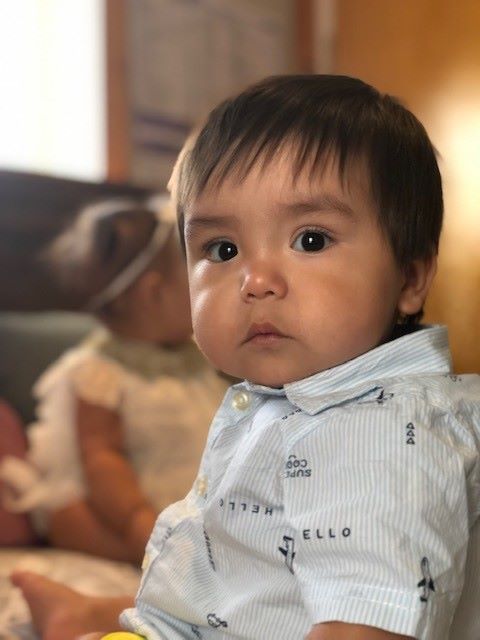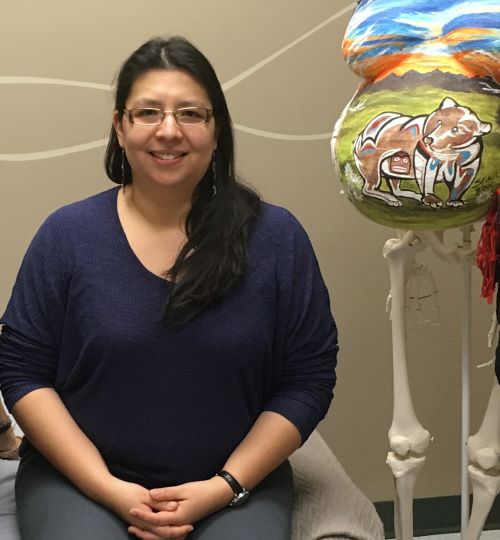Bringing birth home: Restoring Indigenous midwifery
This story originally appeared in The Advocate, the official magazine of the Chiefs of Ontario, Winter/Spring 2019/20 edition, and was written by Marla Monague, Policy Analyst, Indigenous Midwifery, at the Association of Ontario Midwives.

Pregnancy and birth can be one of the most exciting times in one’s journey. The impending arrival of a baby is often anticipated and celebrated by family, friends and community alike; this is especially so for Indigenous families, including First Nations, Inuit and Metis. It is a joyous occasion every time a baby is born into our communities.
While this special time is good reason for celebration, once the baby is here we often discount the tribulations that are attached to accessing perinatal care as an Indigenous person living in community. As we know, our communities are spread vastly throughout our traditional territories. They range from semi-remote/remote to rural and, in some cases, completely isolated, hundreds of kilometers away from town and city centres. Pregnant peoples often have to travel great distances to seek the essential primary health care that is not available to them. This is in addition to the preparation that has to be done for the birthing process, requiring great detail and financial forecasting.
Depending on the location of a community, this could mean leaving your family for days and sometimes weeks. Not being home at a vulnerable time and giving birth without support can be stressful and isolating. Aside from the hardships of travelling, first alone, then with a brand new infant, parents are also at risk of experiencing varying forms of racism in the health-care system. Unfortunately, it is not an uncommon experience and many Indigenous peoples across Turtle Island can relate.
Since time immemorial, perinatal care and birth belonged to us; we took care of our own. Pregnancy and birth were ceremonious occasions and when someone was expecting, they were provided pre- and postnatal care and were treated with dignity and respect. Our original ways have always been intersected with science and spirituality, ensuring a wholistic model of superior care for both parent(s) and baby. Protocols and rites around pregnancy, parenting and birth were all part of the process that included ceremony and health promotion.
Birth rites were the foundation of our nationhood. Babies born into our nations were introduced and welcomed to their families, their clan, their community, in their language, and into an environment filled with love and free of stress. Knowing who we are and where we belong in this journey as a foundational measure is no longer commonplace. The impacts of colonialism have vastly changed how pregnant people are taken care of and how babies are welcomed into this journey. Many communities no longer have the traditional knowledge keepers and reproductive health experts that we did for millennia.
Often, we think about traditional knowledge keepers as the Elders who lead ceremony or hold the knowledge of traditional medicine in our communities. However, we do not always acknowledge or remember that historically, many of these peoples were also midwives. Every single community had at least one midwife, if not more. Babies were always born at home in the communities and it was the midwife who provided the pregnancy care, led the birthing process, provided after care and conducted the rites and ceremonies with the family. Newborns were acknowledged and our connection to land and water was an integral component of these ceremonies and rites. Today, as the impacts of colonialism have forced birth into mainstream institutions and clinical settings, and in many of our communities the last baby born at home goes back generations.
Today’s Indigenous midwives are working hard to change that. The National Indigenous Council of Midwives (NICM), established in 2008, promotes excellence in reproductive health care for Indigenous peoples. They have strategic directions that include maintaining and promoting Indigenous knowledges and practices regarding pregnancy and infant care, expansion of Indigenous midwifery in Canada and advancing Indigenous midwifery as a valued profession.
NICM has released valuable position statements on colonial protocol(s) that are negatively impacting our communities, such as routine evacuation and child apprehensions at birth. Recognizing birth in communities as an inherent right, Indigenous midwives are qualified, educated primary health-care providers and are leading the way to reclaiming and revitalizing Indigenous birth knowledge and ceremonies. Transforming the birth experience is a centric component of intergenerational healing. Indigenous midwives exemplify a set of core values, recognizing that the good health and well-being of Indigenous parents and their babies is crucial to the empowerment of our families and communities.
NICM works with communities and organizations nationally in their efforts to advance their vision. They have a valuable relationship with the Association of Ontario Midwives, whose mission is to advance the clinical and professional practice of Aboriginal/Indigenous and Registered Midwifery in Ontario. Envisioning midwives leading the reproductive, pregnancy, birth and newborn care in the province, the AOM is committed to implementing the recommendations of the Truth and Reconciliation Commission: Calls to Action (PDF, 299 KB).
In 2015, the AOM successfully negotiated with the Province of Ontario, through the Ministry of Health, to provide specific funding for Indigenous Midwifery Programs. This allowed for 8 programs to start up and operate in the following communities:
- Onkwehon:we Midwives Collective, Akwesasne
- Kenhteh:ke Midwives, Tyendinaga
- K’Tigaaning Midwives, Nipissing
- Shkagamik-Kwe Health Centre, Sudbury
- Dilico Anishinabek Family Care, Fort William First Nation
- Southwest Ontario Aboriginal Health Access Centre, London
- North Channel Indigenous Midwifery, Elliot Lake
- Seventh Generation Midwives, Toronto
These were established in addition to these pre-existing programs:
- Tsi Non:we Ionnakeratsha Ona:grahsta (Six Nations Maternal and Child Centre), Six Nations of the Grand River
- Neepeeshowan Midwives, Attawapiskat
Earlier this year, the AOM, in collaboration with the Chiefs of Ontario and a planning committee consisting of Provincial Territorial Organization, community and midwifery representatives, hosted an Indigenous Midwifery Summit, coming together with leaders and community health experts to discuss moving forward. The event was the first of its kind and resulted in a final report (PFD, 12 MB) that focused on recommendations relating to increasing education and public awareness.
Many of us are aware that the struggle for equity in health continues. Review the reports of any inquiry and the results are glaring. More recently, the Inquiry into Murdered and Missing Indigenous Women and Girls released their final report (PDF, 8.5 MB), which included a series of recommendations relating to health. Calls to government and health-care providers to recognize that Indigenous peoples are the experts in caring and healing themselves and that health and wellness services are best when designed and delivered by them.
Recommendation 7.4 explicitly states:
“We call upon all governments and health service providers to provide necessary resources, including funding, to support the revitalization of Indigenous health, wellness, and child and Elder care practices. For healing, this includes teachings that are land-based and about harvesting and the use of Indigenous medicines for both ceremony and health issues. This may also include: matriarchal teachings on midwifery and postnatal care for both woman and child.”
Indigenous midwives couldn’t agree more.

Supporting Indigenous midwifery in our regional and community governance systems is vital to fostering its resurgence. Current mandates exist by the Chiefs in Assembly, via Resolution 19/16: Support for First Nations Midwifery in Ontario, and through AFN Resolution 21-2019: Support for a Greater Investment into the Reclamation of Childbirth. Our hope is to see more programs in communities, more parents receiving culturally safe care and more babies being caught by the loving hands of a midwife.
